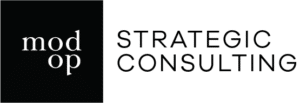In today’s culture of getting stuff done, the velocity of change matters as much as having the ability to make change happen. But too many traditionally successful organizations are still approaching the discipline of execution the way they did 20 years ago – methodically, purposeful and thorough. This needs to change, to reflect how today’s “digital first” world of commerce and business has changed the dynamics of every marketplace.
As we all know, in today’s markets virtually all transactions are conducted digitally or driven with digital components. New companies conduct their digital transactions natively, whereas legacy companies have had to “bolt on” digital components to their traditional ways of conducting business. Net-net, legacy companies are ceding market share to the newer, faster and more nimble companies where digital is a native means of doing business.
Though legacy enterprises are trying to change, their rate of change (velocity) isn’t fast enough. When their rate of change is slower than the rate of change in their industry (now accelerated by new digitally-native competitors) they fall further and further behind. It isn’t a lack of desire to change. What causes the slow velocity is the lack of cultural change in the organization. Many executive and senior management teams that previously found success in the “methodical, purposeful and thorough” era of execution now urgently need to reevaluate this approach and adopt a culture of speed, adaptation, experimentation and rapid-cycle innovation.
How to get started
Changing the culture to execute with greater velocity at traditionally successful organizations is harder than it sounds. It’s not that they’re operating slower than they have in the past, it’s that their industry is now setting a much faster pace. One best practice we preach is to start with an individual agile project, and, building on its success, graduate to extending the methodology into other departments. Once the new culture permeates into the executive and senior management teams, we see our clients operating very differently in their industry and re-establishing themselves as market leaders.
When this necessary culture change in organizations occurs, you’ll know it instantly from the conversations your teams are having. Instead of “have we done a thorough risk-analysis and covered all our bases” you’ll hear “What is the minimum product we can experiment with, and how fast can we get there?” Instead of “We have a two-year project well defined,” you’ll hear “we have agile teams making great progress toward our incremental goals.” Instead of “Wow, our competition is doing great things,” you’ll hear “We are leading change in our industry.”
There is truth to the adage “what got you here won’t get you there.” Legacy organizations eager to keep their grip on their hard-earned market position must realize they need a conscious effort, led from the top, to create a new culture of velocity in the way they get stuff done.
















